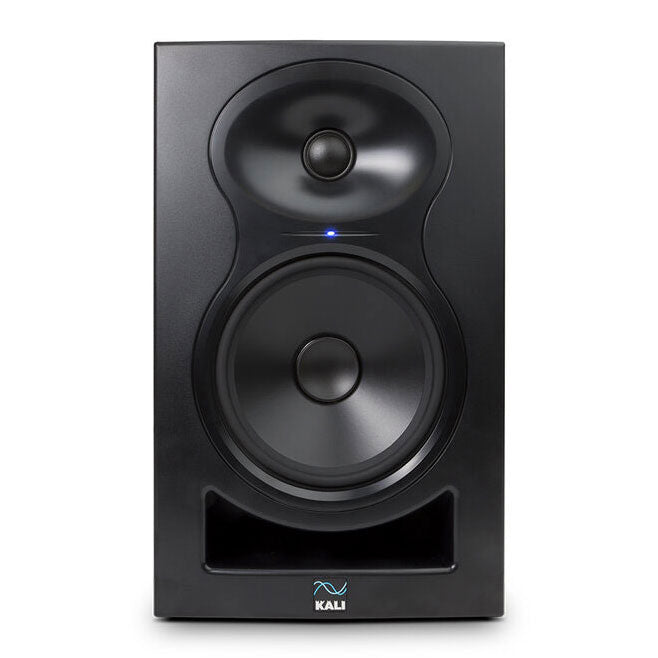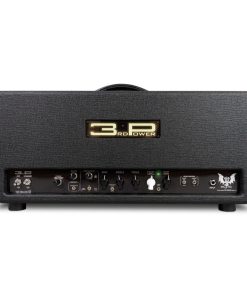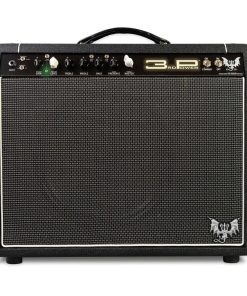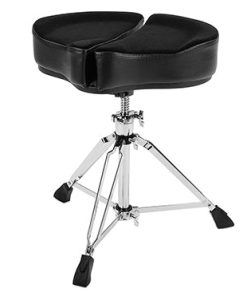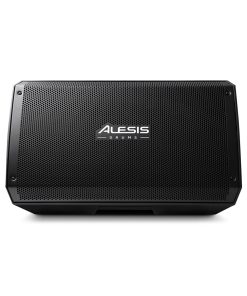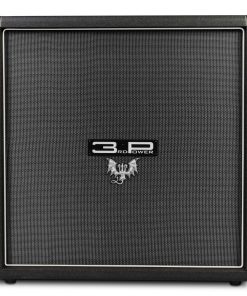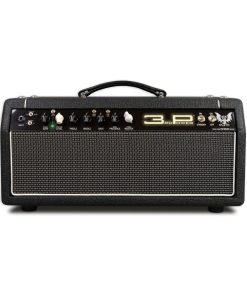Kali Audio LP-6 V2 6.5″ 2 way Active Studio Monitor Black Kali Audio
$ 199,99 $ 80,00
Transparency. Clarity. Accuracy.
Kali Audio’s Lone Pine Series studio monitors are designed to allow you to hear every detail that’s happening in your mix.
This starts with an exceptionally accurate frequency response. Whatever is present on your mix is what you’ll hear in these monitors. Nothing is boosted or suppressed to cover flaws or try to sound more pleasing.
With the LP-6, you can mix with more confidence, and you can also be assured that your mix will translate as best as possible to whatever systems your audience is using.
80W Class D Power
39 Hz Lower Frequency Response
< 3% System THD 94 dB @ 1M
112 dB Max SPL
3-D Imaging Wave guide
Hear three dimensional sound from a stereo pair of speakers.
Dual-Layer Voice Coil
Large diameter voice coil allows for low distortion and high dynamic range.
Low Noise Port Tube
Precisely engineered using airflow simulations for powerful bass without port noise.
The single most important aspect of a studio monitor is its accuracy. A good studio monitor should present the material it’s playing faithfully, allowing you to make critical decisions that you know will translate to all the systems that your work will ultimately be played on.
Rather than make our own claims about the accuracy of our speakers, we had them independently tested by Pro Sound Testing in Greenville, Indiana. You can download their full test data from the links below, and explore the frequency response, dispersion, and distortion characteristics of the LP-6.
Kali Audio defines a listening distance as the maximum distance at which the speakers can play continuously at 85 dB while maintaining 20 dB dynamic headroom.
This means that anywhere within that listening distance, you can listen for long periods of time at reference volume, and momentary peaks such as bass drops or explosion effects will come through clearly and with minimal distortion. The LP-6 has enough output for most 1-2 person setups, and the LP-8 can handle larger setups easily.
Bass on the LP-Series monitors is delivered by larger magnets and larger voice coils than any comparable speakers on the market. This gives you more accurate bass response that extends lower, so you can dial in exactly the low end sound you need. Bass response is not boosted or overhyped, but you can be sure that you’re hearing the bass that you have on the track.
The integrated Class D Power amp delivers clean, reliable power that’s optimized to this speaker.
Boundary EQ Control
A speaker’s given position in a space can drastically change it’s frequency response. A speaker placed against a wall or on a desk will sound very different than a speaker placed on a stand, even in a well-treated space. Hard surfaces like walls, desk tops, and recording consoles can change the low end frequency response of the monitor, and degrade the overall clarity of the sound.
Happily, most of the common positions are fairly predictable and easily corrected.
Kali’s team did our Boundary EQ tuning at The Village Studios in Los Angeles, and came up with boundary compensation EQ settings to help you get the optimum sound for where you need to put your speakers.
Combined with the LF and HF trims, this will ensure that the speakers sound their best no matter what room you’re mixing in, or where the speakers are placed.
Easy Connections
The LP-6 features balanced XLR and TRS inputs, and an unbalanced RCA input.
The RCA input can be set to -10 dBu sensitivity when you’re using consumer devices like a laptop or smartphone’s headphone jack.
3-D Imaging Waveguide
The waveguide on the Lone Pine Series studio monitors ensures that the directivity of the loudspeaker is smooth throughout its frequency response. What’s more: it’s calibrated so that the sound power of the loudspeaker helps you to perceive sound accurately.
In practical terms, what this means is that you’re hearing spatial details in the recording that allow your brain to place elements of the recording in the space around you. This gives the speakers a more natural, lifelike feel that exposes more of the detail of the material that you’re working on. This level of detail makes it easier to make critical decisions, as well as making these monitors pleasurable to mix on and listen to in general.
Low Noise Port Tube
We wanted to put a port on the front of the LP-Series studio monitors so that they could be used in small spaces where they’d be placed against walls. At the same time, we didn’t want noise from the front port to distract from the accuracy of the speaker, so we developed a special front port that doesn’t make noise.
On most port tubes, air leaves at different speeds from different points of the opening, creating noisy turbulence. This turbulence can be heard as “chuffing,” or an audible air sound coming from the monitor. This sound will add to the noise floor and obscure the details of the low end.
The port tube on LP-6 was designed to ensure that all of the air leaves the port tube at the same velocity. This helps add to the low end response of the speaker, while keeping the bass clean, tight, and devoid of extra noise.
Powered: Yes
Amp Class: D
Power Config: Bi-Amped
LF Power: 40 W
HF Power: 40 W
Total Power: 80 W
LF Driver: 6.5″ Woofer
HF Driver: 1″ Soft Dome Tweeter
Freq. Response (-10 dB): 39 Hz – 25 kHz
Frequency Range (±3 dB): 47 Hz – 21 kHz
Crossover: 1.5 kHz
Recommended Listening Distance: 0.8 – 2.2 Meters Max SPL: 112 dB
Professional packing and fast shipping
Due to our long-term partnership with UPS, FedEx, DHL and a variety of other world-class carriers, we are able to offer an array of shipping options. Our warehouse personnel are extremely skilled and will package your products according to our precise and exact specifications. Your items will undergo an extensive inspection and will be adequately secured before being shipped. We deliver to thousands of customers every day from all over the world. This shows that we're committed to be the largest retailer online in the world. The warehouses and centers of distribution are situated in Europe, as well as the USA.
Please note that orders with more than one item will be subject to a processing period that is based to the specific item.
Before shipping, we will examine thoroughly the items you've ordered. The majority of orders are shipped within 48 hours. The delivery time is estimated to be between 3 and seven days.
Returns
We do not control the inventory in our warehouse or factory. So the actual stock may fluctuate at any moment. Be aware that it is possible that your order will be out of stock after you have made the order.
Our policy lasts for 30 days. If it's been more 30 days since you've purchased your item We're sorry to say that we can't offer you a complete exchange or refund.
You are able to return a product in the event that it is not used and still in the same state as the day you received it. The item must be in its original packaging.
Related products
Accessories - Guitar
Guitar - Electric Guitar - Amplifiers
Accessories - Books & Video
Alfred – 00-35002 – Billboard Sheet Music Hits 2000–2010 Alfred
DJ - Lighting& - Fog
ADJ – RAY129 – Startec Rayzer – 2 in 1 LED Lighting Effects Fixture American DJ
Accessories - Guitar
Accessories - Books & Video
Alfred – 00-42566 – Just for Fun – British Invasion Ukulele Alfred
Accessories - Guitar
ABS Molded, Strat/Tele Rectangular Hardshell, Large TSA Trigger Latches SKB
Accessories - Cables & Adapters
1/4 in. TRS Fem to 3.5 mm TRS Male Headphone Adaptor RV Connector
Guitar - Bass - Effects
Accessories - Books & Video
Accelerated Piano Adventures for the Older Beginner Lesson Book 1 Hal Leonard
Guitar - Electric Guitar - Amplifiers
Accessories - Books & Video
Alfred – 00-17087 – Accent on Achievement – Alto Saxophone – Book 1 with CD Alfred
Pro Audio - Microphones - Wired Microphones
ADK Custom Shop Berlin-47T Custom FET Microphone ADK Microphones
Guitar - Electric Guitar - Effects
Aclam AP0030 The Windmiller Preamp Booster Pedal ACLAM GUITARS
Drums & Percussion - Acoustic - Hardware
Ahead Spinal Glide Saddle Drum Throne with 3 Leg Base – Black Top with Black Sides Ahead
Pro Audio - Sound Reinforcement - PA Systems
Alesis Strike Amp 12 2000-Watt 12 in. Powered Drum Amplifier Alesis
Pro Audio - Microphones - Wired Microphones
ADK Custom Shop Cremona 251-T-FET Microphone ADK Microphones
Guitar - Electric Guitar - Amplifiers
Accessories - Books & Video
Accessories - Guitar
3M 3550 Dual Lock Hook and Loop Fastener – 1 in. wide – Per Foot 3M
Accessories - Books & Video
Alfred – 00-380 – Learn to Play the Alfred Way – Baritone Uke Alfred
Pro Audio - Microphones - Wired Microphones
ADK Custom Shop Munich-7-T T-FET Studio Microphone ADK Microphones
Accessories - Pro Audio
Guitar - Electric Guitar - Amplifiers
Accessories - Books & Video
A Dozen a Day Book 1 Technical Exercises for Piano Hal Leonard
Accessories - Cables & Adapters
Guitar - Bass - Effects
Guitar - Electric Guitar - Amplifiers
Guitar - Electric Guitar - Amplifiers
Guitar - Electric Guitar - Effects
Aalberg AERO AE-1 Wireless Controller for Aalberg Audio Effects Pedals Aalberg
Guitar - Bass - Effects
Accessories - Books & Video
